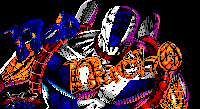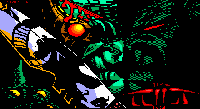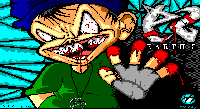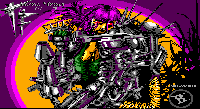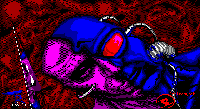
ART:
OTHER:

As the BBS scene was mainly text based and difficult to use, a company called Telegrafix? designed and introduced a technology known as RIP graphics around 1992? It allowed sysops for the first time to add buttons and graphics to the BBSs, making them more user friendly.
RIP allows for 16 colours at a higher resolution representing lines, curves, colours, etc with a series of letters and numbers. Special terminal programs were needed to read and convert RipScript files into viewable graphics.
The main drawbacks to RIP graphics was the average terminal program BBS users were faced with, known as RIP Terminal. RIP graphics did not take off as well as it could have due to bad marketing. Sysops wanting to use Telegraphix's technology had to fork out large sums of money for a lousy program which was extremely difficult to use.
These days, the RIP art scene plays second fiddle to the more accepted ANSI. RIP remains a niche market with a few die-hard fans. Telegraphix has almost given up on their technology with no other companies willing to take it up. The company is to release their third version but I suspect it will be their last.
Pros
File size: While VGA's are usually around the 150kb+ mark, you would be hard pressed to find a RIP larger than 40kb.
Cons
Compatibility: Not many programs support RipScript.
Acceptability: Rip is a somewhat failed attempt to surpass ANSI as the standard DOS bases Bulletin Board graphics systems.
